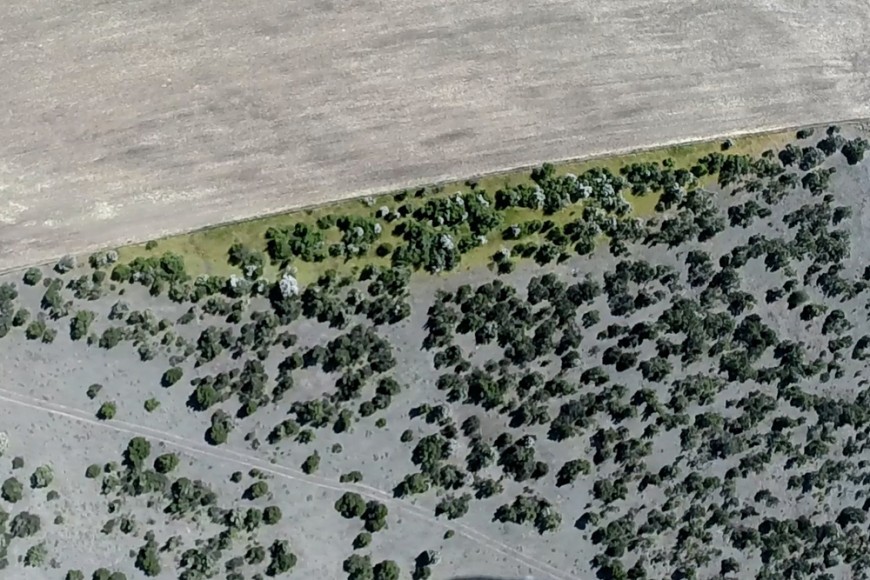
Irrigation overspray from a paddock into a reserve near Medbury, Canterbury. Affected area is shown in green. Photo: Warren Chinn.
Writing in the New Zealand Journal of Ecology, the scientists describe how nitrogen enrichment, likely from irrigated animal effluent, is detectable 10 m inside reserve boundary fences. Their study has observed increases in exotic herbs and grasses, along with declines in native species, up to 30–40 m in from irrigated boundaries.
“These distances are significant as some of these reserves are only 100 m across, meaning that more than 60% of these reserves can be affected,” says co-author Dr Gretchen Brownstein.
The researchers looked at changes in plant composition with increasing distances from irrigated and unirrigated reserve boundaries, and also monitored changes in soil nitrogen and its chemical forms to better understand the sources of nutrient spillover. Exotic plant species that specialise in disturbed habitats like roadsides were the primary invasive species, rather than pasture species.
The reserves had a long history of low intensity agriculture prior to being gazetted as reserves, but still contained significant and diverse populations of native species back in the 1970s. Since then, the researchers found that they have lost more than half their endemic species while experiencing a surge in exotic species. Co-author Dr Adrian Monks notes:
“This loss of species is likely due to a combination of factors, including random extinctions that afflict small populations, lack of ecological connections to other fragments to allow replenishment of species, and competition with invasive plant species. Two separate fires spreading from a neighbouring property have also destroyed around 70% of the shrubland in the 50 ha Medbury Scientific Reserve, the largest of these protected areas.
The ongoing effects of more intensive land use adjacent to the reserves could be managed with better rules around buffers. “Irrigation and effluent buffers around these reserves would help to limit further degradation of these reserves,” says Dr Brownstein. However, the study highlights the larger problem of establishing representative reserves that are too small.
“While it is too late to set aside larger blocks on the Canterbury plains, there are lessons in this for areas such as the Mackenzie Basin, which still have large areas of dryland indigenous vegetation that are at risk from irrigation, renewable energy schemes and wilding conifers” says Dr Monks. “The Mackenzie Basin is at a similar level of intensive development to the Canterbury plains when the shrubland reserves were established more than 50 years ago. To maintain viable indigenous populations in that landscape will require protection of blocks in the 100s of ha to avoid past mistakes in reserve design made on the plains.”

